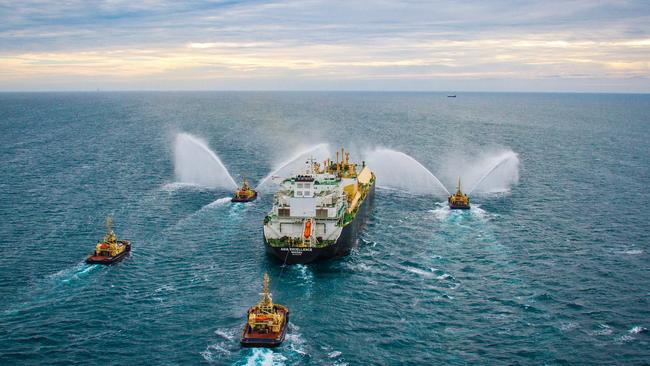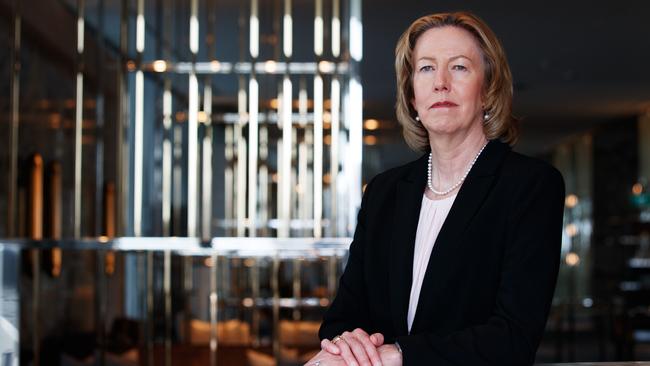Energy giants Chevron, Woodside and AGL seek to cut emissions red tape
A number of high-profile energy producers have raised concern over the duplication of state and federal government schemes to cut emissions.

A raft of high-profile energy producers have raised concern over the duplication of state and federal government schemes to cut emissions, as the Albanese government pushes ahead with its overhaul of the safeguard mechanism for big polluters.
US energy major Chevron, gas giant Woodside Energy and electricity operator AGL Energy have all separately flagged a series of issues as they seek to navigate an array of regulations aimed at smoothing a path to net zero emissions.
Chevron’s Gorgon LNG plant and Woodside’s Pluto gas export facility are both subject to requirements to cut emissions from West Australia’s Environmental Protection Authority while also falling under the safeguard mechanism, part of Labor’s 43 per cent emissions reduction goal by 2030.
Chevron said it wanted to see a smoother connection between the state and federal approaches.
“Chevron would like to see alignment in approaches to reducing greenhouse gas emissions between the state and federal governments,” said Chevron’s general manager for energy transition, Dave Fallon.
“There is a need for consistency which would enable industry to more effectively plan and meet obligations. We would also like to see any Safeguard Mechanism changes providing policy enablement and incentivisation for carbon abatement efforts such as Carbon Capture Utilisation and Storage.”
Woodside, which is building the $16.5bn Scarborough LNG project in WA, also called for a smoother approach for business.
“The Paris climate commitments are national commitments,” Woodside chief executive Meg O’Neill said.
“Now that there’s clarity on Australia’s target — and it aligns very well with the state targets — we really ought to let the national framework drive the emissions reduction that Australia seeks. Having overlapping state and Commonwealth rules is going to be really challenging for anybody operating these facilities.”

In NSW, AGL Energy said it was worried about a plan by the state’s environmental regulator — the Environment Protection Authority — to impose new pollution limits on a raft of industries as part of a 50 per cent cut in carbon emissions target.
“AGL is supportive of strong action on climate change and the setting of ambitious targets to instigate action. Regulation of businesses can be a strong motivator as it sets the guideposts for such ambition,” AGL said in a submission to the EPA process.
“However, Australia’s carbon policy landscape is becoming increasingly complex, with overlapping state and federal government and state regulator actions all targeting emissions reductions in one form or another. This not only increases the administrative burden for government but also for companies navigating their compliance obligations.”
AGL argued that government energy departments and regulators were “best placed to develop, implement and enforce the major policy decisions impacting the energy sector” given they focus on both households and grid stability.
“We hold some concerns that EPA’s involvement in driving down electricity sector emissions could have unintended consequences and flow-on impacts across the national electricity market, and for consumers. We welcome further clarification of the EPA’s intended role in these processes.”
The NSW EPA emission limits will be progressively placed on industry sectors as part of a government goal to reach net zero by 2050, with a two-month consultation period and a policy in place by Christmas.
Green groups said it marked the first time an environmental watchdog in Australia had regulated carbon dioxide as a pollutant.
The operators of 215 large industrial facilities – contributing 28 per cent of Australia’s emissions – will be required to cut emissions under Energy Minister Chris Bowen’s overhaul of the safeguard mechanism. The scheme is due to kick in from July 2023.
Under Labor’s Powering Australia climate plan, the upgraded safeguard mechanism will deliver a 213 million tonne cut to greenhouse gas emissions by 2030.
Anthony Albanese has promised to reduce the baselines over time to better align with Australia’s net zero by 2050 goal, after Reputex analysis found emissions covered by the mechanism had grown by 7 per cent since its commencement in July 2016.




To join the conversation, please log in. Don't have an account? Register
Join the conversation, you are commenting as Logout